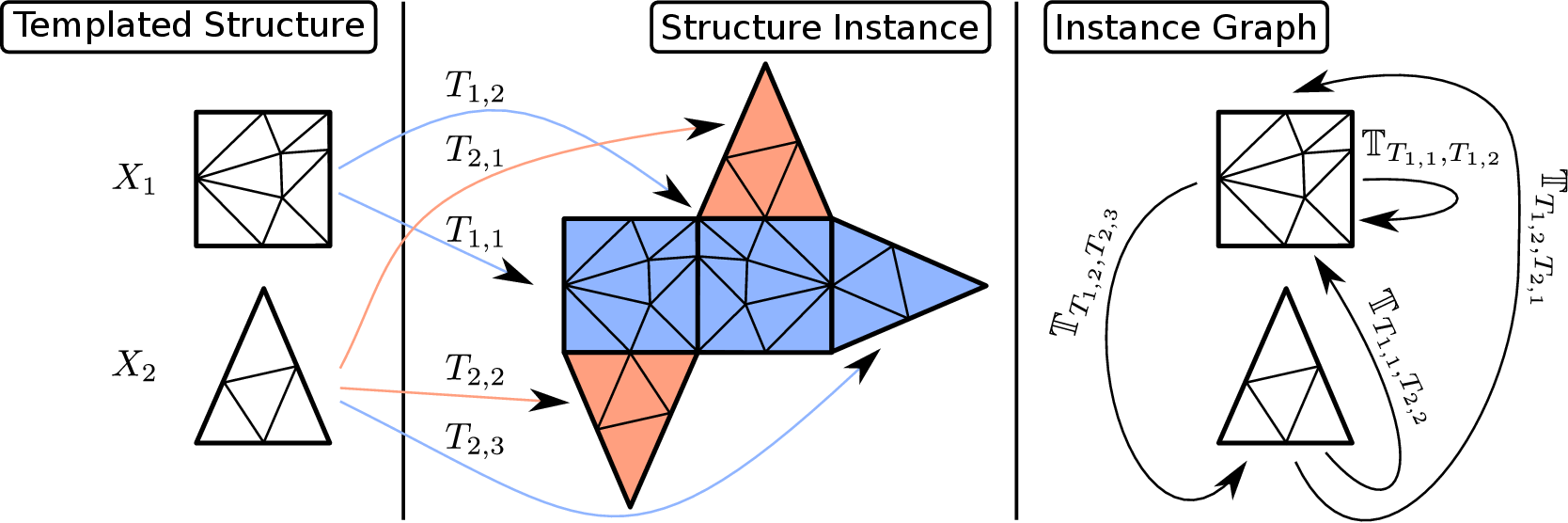Proof.
Every mesh template

is already conforming, so non-conformities can only occur between two elements

which are in different mesh instances.
Let

and

be any two elements in the structure instance

where

is in the instance of template

with transformation function

and

is in the instance of template

with a transformation function

.
Due to Requirement
4.2 of Definition
4.3, the intersection of

and

is either empty (if

and

are no neighbors) or included in the geometry instance interface of the instances. If their intersection is not empty, Requirement (i) ensures that both

and

are also included in the geometry instance interface. Due to (ii),

and

are in both interfaces and their intersection is a face of both. Therefore,

is conforming.

